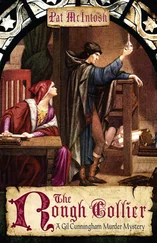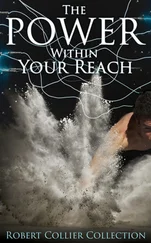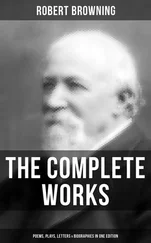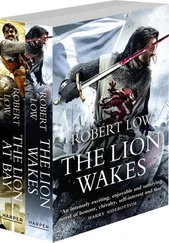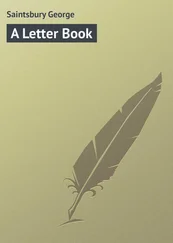As a rule, such catch-phrases on the outside of envelopes are effective only on third-class mail, to catch the reader’s eye and arouse enough interest to get him to open your letter. The Review of Reviews has used them numbers of times to great advantage. In the O. Henry sale, they used such catch-lines as: "When the Rattlesnake Struck " "The Fateful Kiss," "If This Happened on Your Wedding Night." In selling Simonds’ "History of the World War," they had several that worked well, such as "And they said we wouldn’t fight!" and "Retreat, H--l! We just got here!" Another, for a health course, was " ’If the damned fools only knew!’ said Roosevelt."
All these helped to get the reader inside the envelope. Their purpose was the same as the newspaper headline—to arouse the reader’s curiosity and make him go further into the story. So they have to be judged like any other headline, by the one standard—how successful are they in doing their job? And the only way to find that out is to test them against other headlines, or against plain corner cards.
Even on third-class mail, we often find the plain corner cards better, and on first-class, it is almost invariably so. You see, the only object of a 2 cent stamp is to make the letter seem like a personal message, and to put a catch-phrase on the outside of the envelope defeats that object at once.
So a pretty safe rule to follow is—if you want to use an attention-getter on the outside of the envelope, save half your postage by sending your message third class.
One of the most effective stunts we have seen used to get a man to look inside the envelope was the idea of a young friend of ours. He watched trade papers, house organs and the like for pictures of men connected with different organizations. Then, instead of addressing the man by name, he pasted the man’s picture on the front of the envelope and under it wrote: "Care of Such and Such a Company," and the address. It was subtly flattering and it won attention—favorable attention, too.
Folders often lend themselves to such attention-getting stunts even better than envelopes, for their size gives more room for illustration. In effect, they are advertisements sent through the mails, and they have to compete for their readers’ interest in the same way as advertisements in a magazine. And their success or failure depends upon the same factors of attention-winning illustration and headline, interest-arousing start, clear description, logical argument and clincher, with coupon or card that makes ordering easy.
These are the more obvious ways of getting attention. Often they are so exaggerated that they defeat their own purpose. Quieter and usually more effective ways may be found in the letter itself, in the circular enclosure, or in the post card or order form.
Some offers lend themselves to a pictorial, colored letterhead. When Nelson Doubleday first offered his Little Nature Library, he used a plain letterhead. By litho-graphing a nature scene of birds and woods and flowers across the top and down one side of his letterhead, he actually doubled the number of orders received from his letter! And the Little Leather Library increased their proportion of orders by almost as much.
On the other hand, we have seen numbers of offers which have pulled better results on a plain letterhead than on a colored, pictorial one. To be effective, pictures must not merely be attractively done—they must add essential background that would not be possible without them.
As an instance, at one time we offered a set of large gravure prints of famous pictures. By tipping in the upper left-hand comer of the letterhead a small reproduction of one of these prints, we added nearly 50 percent to the pulling power of the letter, and sold the prints (which had been gathering dust for years) at a goodly profit.
The same thing held true in selling calendars—a small reproduction in full colors of the picture we were using on the calendar, greatly increased the returns.
Where a business is built around some one personality, as in the case of Elbert Hubbard, his picture on the letterhead often adds 10, 15 or 20 percent to the pulling power of his letters. We found that to be so in testing different offers for John Blair, head of the New Process Company of Warren, Pa. And the same thing has been true of a number of people we have worked with. Another effective attention-getter was to tip on the letterhead a sample of the product we were offering. When it was traveling bags, we gave a sample of the leather, to show how tough and long-wearing it was. When it was a topcoat or overcoat, we attached a sample of the cloth, so you could prove for yourself its wool content, see its attractive color and design, get the feel of it.
Then there is the fill-in, and the way the letter is folded, and the circulars and order card inserted. We frequently found that even so unimportant a thing as the fold made a difference in the orders. Folding the letterhead out, using the military fold so that only the salutation and first line of the letter showed when the reader picked it up, has increased orders for us at times by as much as 10 percent.
Indenting the main paragraph helps, too. We have found it a more effective way of calling attention to a special point of interest than either underlining or capitals.
Even the postage stamp has an effect upon the attention accorded a letter. Two red 2 cent stamps pull more replies than one 4 cent stamp. One red 2 cent stamp pulls better than two green 1 cent stamps. A brown 1 1/2 cent stamp looks much like a 4 cent stamp, so it pulls better than a green 1 cent stamp, but no better than two 1/2 cent stamps! As for the metered mail and postage indicia, experience varies, but in our own case, we have found postage stamps more effective than either. To show what a difference color makes even here, we know at least one post office that permits the use of black ribbons in running 1 cent metered mail, and this 1 cent metered postage has frequently outpulled 2 cent stamp or meter!
These are minor details, of course, and not to be considered in the same breath with the start of the letter, the description, the argument or the close. But when you have written a successful letter, when you have your appeal fight and are looking only for ways to get more orders, then you will be surprised at how these little minor details can make that order record mount!
CHAPTER 4
WORD PICTURES THAT MAKE PEOPLE WANT YOUR PRODUCT
Table of Contents
Now that you have your reader’s interest, what are you going to do with it? Start a series of firstlys, and secondlys and thirdlys, like the old-time Preacher, and put your reader to sleep, losing all the advantage you have worked so hard to gain? Go into a long-winded description that tires him out before he is halfway through? Or lead him gently from one point of interest to another, with word pictures so clear, so simple, that he can almost see the things you are offering him?
Getting your reader’s attention is your first job. That done, your next problem is to put your idea across, to make him see it as you see it—in short, to visualize it so clearly that he can build it piece by piece in his own mind as a child builds a house of blocks, or puts together the pieces of a picture puzzle.
The mind thinks in pictures, you know. One good illustration is worth a thousand words. But one clear picture built up in the reader’s mind by your words is worth a thousand drawings, for the reader colors that picture with his own imagination, which is more potent than all the brushes of all the world’s artists.
And the secret of painting such a picture in the reader’s mind is to take some familiar figure his mind can readily grasp, add one point of interest here, another there, and so on until you have built a complete word picture of what you have to offer. It is like building a house. You put up your framework. You add a roof, floors, sides, windows, doors, stairs, until you have your structure complete. You would not start with one side, or the roof. You get a solid foundation first; then you add to it logically, piece by piece, until you have your finished building.
Читать дальше

